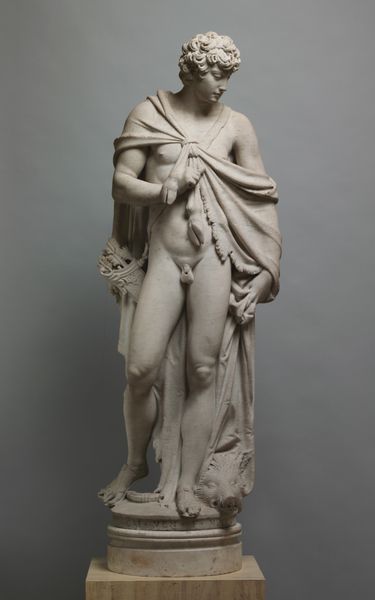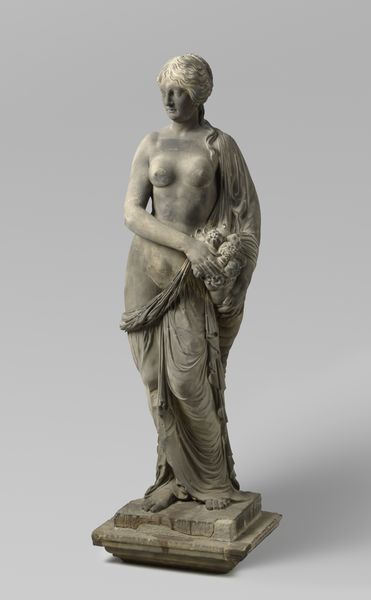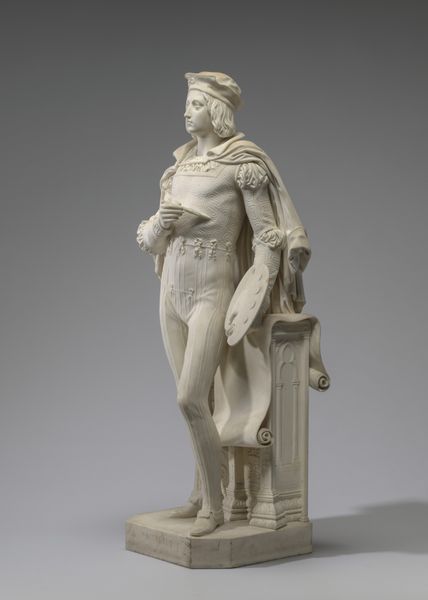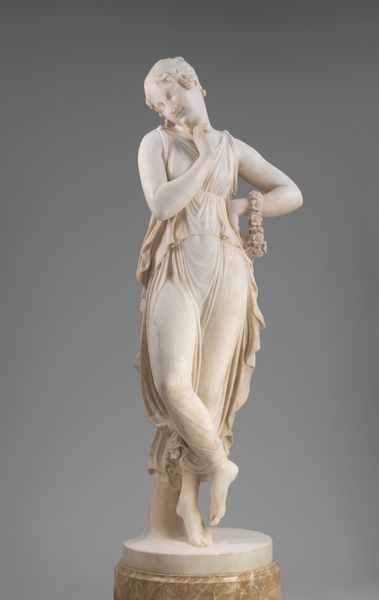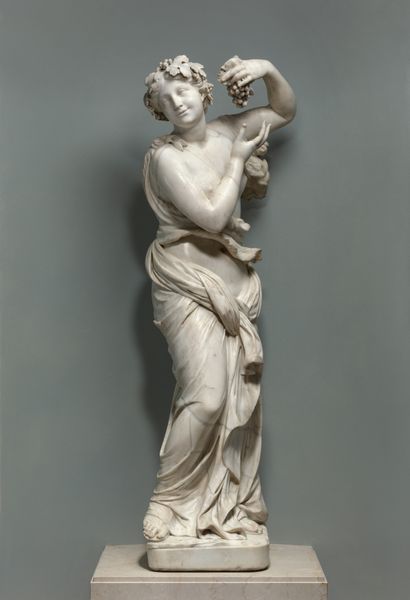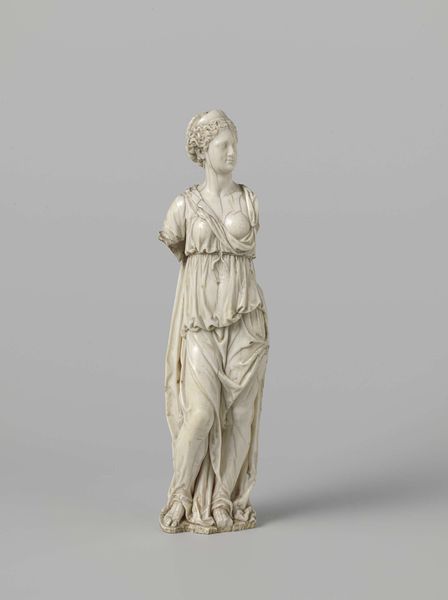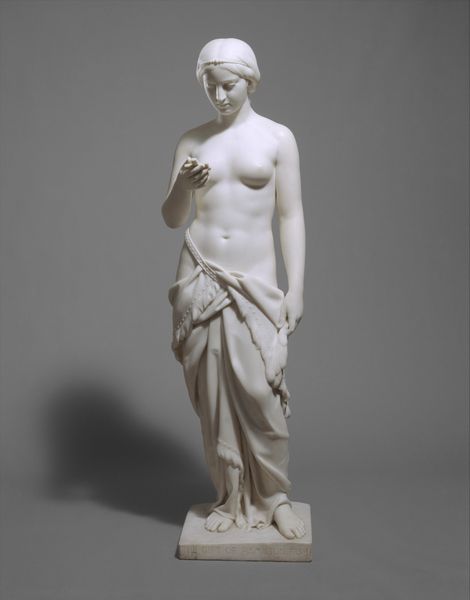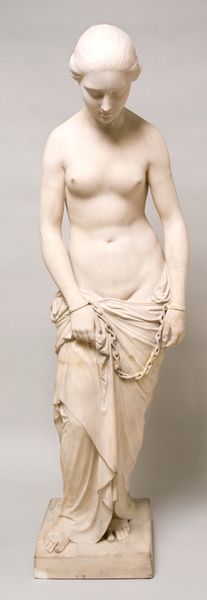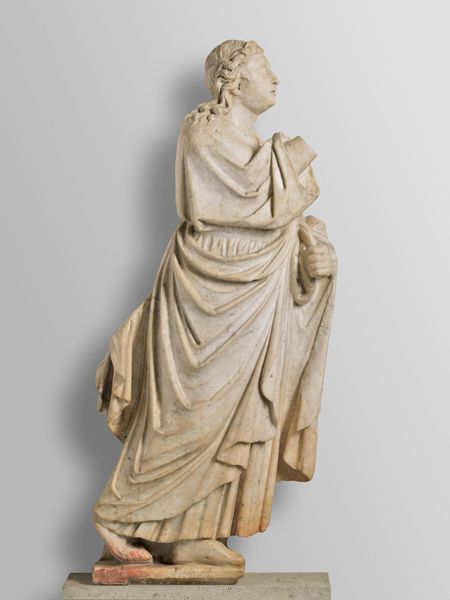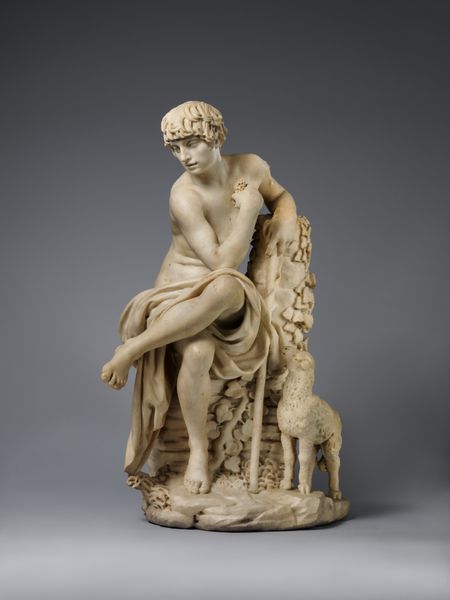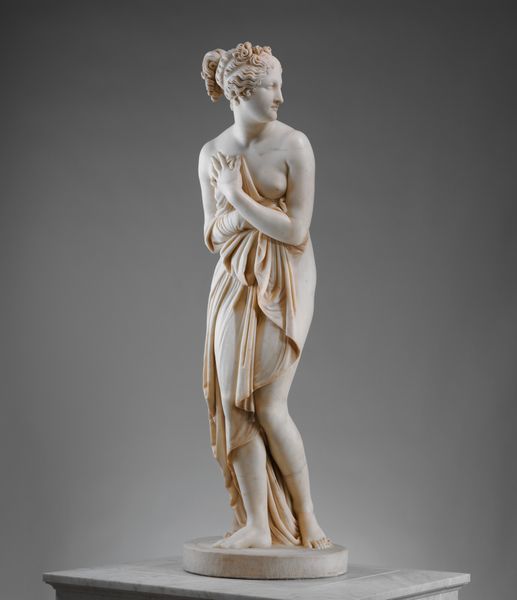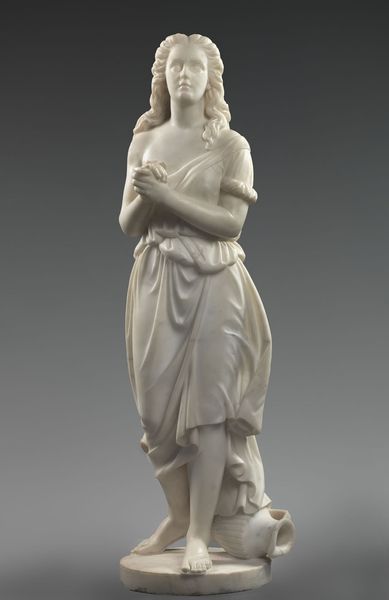
sculpture, marble
#
portrait
#
statue
#
allegory
#
baroque
#
sculpture
#
classical-realism
#
figuration
#
classicism
#
sculpture
#
history-painting
#
marble
#
statue
Dimensions: overall with base: 181.5 x 64.3 x 49.2 cm (71 7/16 x 25 5/16 x 19 3/8 in.)
Copyright: National Gallery of Art: CC0 1.0
If justice came to life, what would it look like? This is Barthélemy Prieur’s interpretation of Justice, sculpted from white marble in 1610. The French sculptor lived between 1536 and 1611, and created many allegorical figures like this during his career. Prieur worked in the Mannerist style, which is characterised by heightened drama and exaggerated elegance. Mannerism came after the intense realism of High Renaissance sculpture. Here, Justice is imagined as a powerful female figure based on the Roman Goddess Justitia. Prieur has included many traditional attributes of Justitia. How many have you noticed? For example, the figure holds a sword which symbolises the swift and final enforcement of fairness. In her other hand, Justice holds an olive branch. This is an ancient symbol of peace. Together, these two attributes connote the careful balance between punishment and forgiveness. Justice stands with her weight on her forward leg, as if she’s walking towards us. This pose creates curves in her body, providing a sense of movement and dynamism. The realistic drapery seems almost weightless. It’s hard to imagine how this effect has been achieved in marble! Justice is the only surviving sculpture from the tomb of Henry IV and Marie de Medici. It remained unfinished at the time of Prieur’s death, and was likely completed by his son-in-law.
Comments
No comments
Be the first to comment and join the conversation on the ultimate creative platform.
